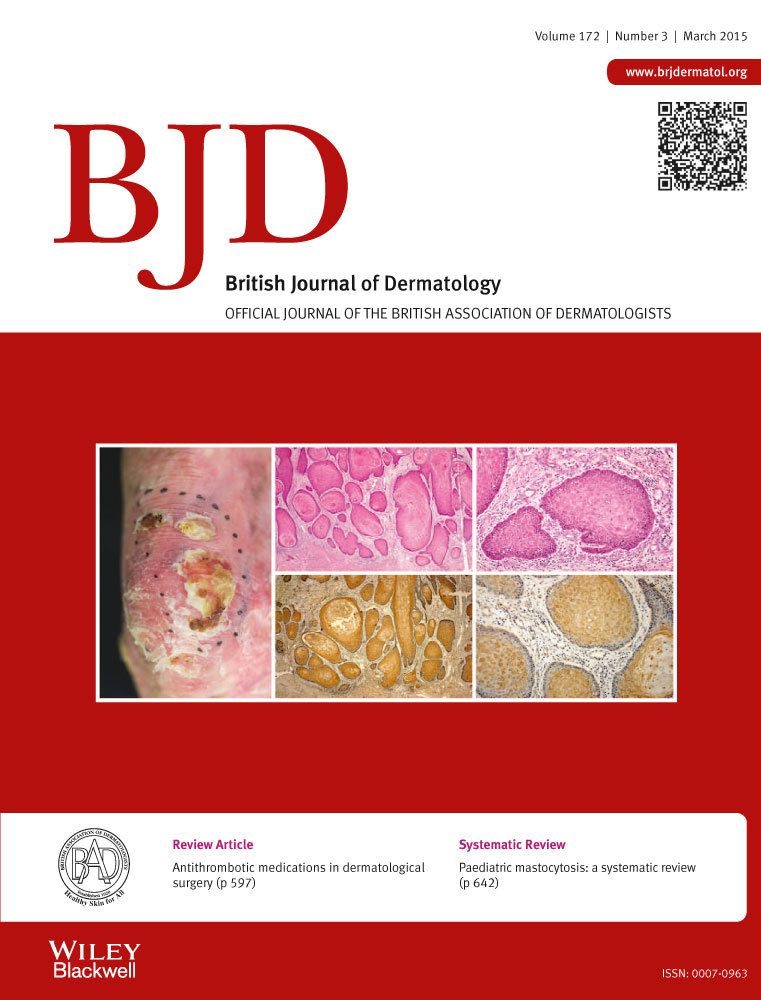Prospective comparison treatment of 595-nm pulsed-dye lasers for virgin port-wine stain
Summary
Background
Vbeam® and Cynergy® are 595-nm pulsed-dye laser (PDL) equipment options, both extensively used in the clinical treatment of port-wine stains (PWS). However, there has been no study conducted of the differences in PWS therapeutic outcomes across both devices.
Objectives
To compare the efficacy and safety of Vbeam and Cynergy equipment in the treatment of PWS.
Methods
Twenty-two patients with PWS were included in this study and were treated with both Vbeam and Cynergy. Patients underwent three treatment sessions. Treatment parameters used were as follows: (i) Cynergy®, Cynosure Corp., 595-nm wavelength, radiant exposure of 11 J cm−2, 2-ms pulse duration, 7-mm spot size, cold-air cooling system of level 3. (ii) Vbeam®, Candela Corp., 595-nm wavelength, radiant exposure of 11 J cm−2, 1·5-ms pulse duration, 7-mm spot size, cryogen spray cooling (30 ms of cooling with a 20-ms delay). Clinical efficacy outcomes were evaluated by chromameter and visual assessment 2 months post-treatment.
Results
All patients were treated by both Vbeam and Cynergy on adjacent sites. Chromameter evaluation showed that the average blanching rate was 21·24% for Cynergy sites and 36·42% for Vbeam sites. This difference was statistically significant (P = 0·05), which suggests that PWS respond better to Vbeam than to Cynergy at the settings used in this study. No patients developed scarring or permanent pigmentation change.
Conclusions
Compared with Cynergy, Vbeam may be more effective in the treatment of PWS. Despite using supposedly equivalent fluences in 595-nm PDLs, equivalent clinical results cannot be guaranteed.




